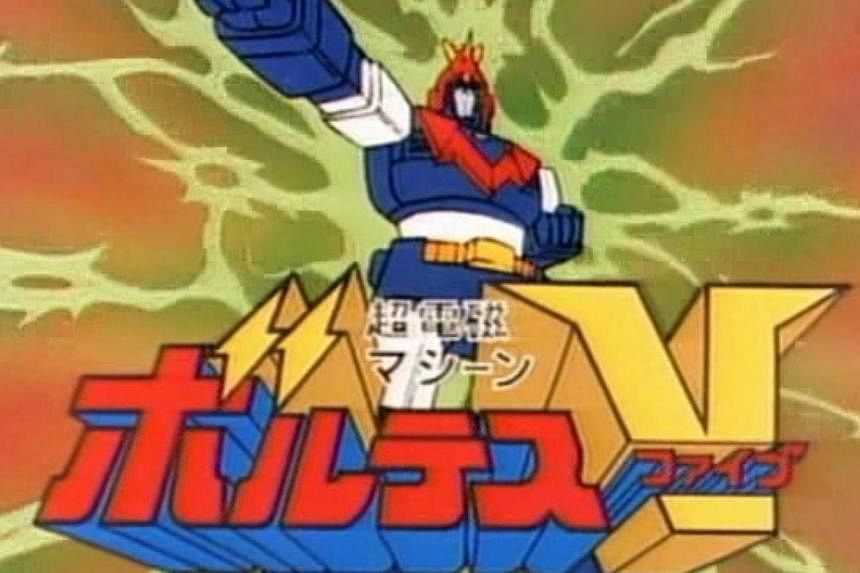WHEN I was growing up in a suburb south of Manila, there was one year when a specific hour of a specific day of the week commanded an unrivalled reverence among prepubescent boys.
At 6pm every Friday, beginning on May 5, 1978, a Pied Piper's tune would empty the streets of children old enough to be snared by the hypnotic glare of television.
It was the diminutive sprite Horie Mitsuko singing Borutesu Faibu, the theme song to a Japanese anime series. The song - punctuated by a rock-staccato beat and accompanied by a marching band ensemble that underscored the importance and urgency of its purpose - was a war drum, an exhilarating cry for the faithful to gather and partake of a mission and an adventure that was both galactic in scale and mythical in scope.
It didn't matter that the words were in Japanese; it was precisely the incoherence of the lyrics that made it even more comprehensible and personal to us because it gave us the freedom to fashion our own anthem individually that suited our small, insignificant, young lives.
It has been 35 years. Yet Horie Mitsuko's anthem has not been dulled by time. At least not for those of us who grew up in the 1970s under the shadow of the dictator Ferdinand Marcos and martial law.
With whispers of a dictatorship once more blowing in the wind as President Benigno Aquino bids for a second term in office, beyond the limit of one set by the Philippine Constitution, the hymn has even gained new significance. This is because of the memory it evokes and its clarion call to believers: Let all those who champion freedom and justice, all those who would rather forfeit their lives than carry the yoke of tyranny, let us all volt in!
For the uninitiated, Horie Mitsuko's hymn raised the curtain on each episode of Voltes V, five flying vehicles that "volt in" to form a 60m tall super robot.
When an alien race known as the Boazanians descended on Earth to add our little blue dot to their galactic empire using "beast fighters" that seemed impervious to all manner of war machines available to man, the world turned to Voltes V.
In each episode, Voltes V would square off with one, sometimes two, of these beast fighters. We'd be dazzled by the assortment of weaponry he'd unleash on his foes. In the end, he'd smite them with a laser sword drawn from his chest, slicing the beast fighters with his signature "V" cut across their torsos.
We'd rooted not just for the five young pilots of Voltes V, but even for some of the villains that we knew were on the wrong side of history only because they truly believed there was necessity and nobility in their cause.
We'd be invested emotionally in both the heroes' and villains' stories.
A man seeking redemption and, in so doing, liberates his people and heals a family torn apart by bigotry and betrayal. A son thirsting for approval from a father figure who instead sees him as a threat and an unworthy heir. Two brothers fighting on opposite sides of an ideological and filial divide. A woman's unrequited love.
But it was the tyranny that was most pronounced.
The Boazanians were bitterly divided because of a cranial feature: Half their population had horns, and they ruled their planet Boazania. The unhorned half were treated as scum.
It wasn't long before discrimination degenerated into ethnic cleansing. A psychotic emperor ordered every one without horns rounded up in concentration camps and sent off to work deep inside the planet's brutal mines.
A rebellion naturally broke out. The leader of this insurrection, Ned Armstrong, a brilliant, benevolent baron who cut off his horns to demonstrate the crudity of the injustice and oppression that had befallen his people, fled to Earth after the rebellion failed, to escape incarceration and lay the groundwork for the planet's defence against a planned Boazanian invasion.
He created Voltes V.
The story of Voltes V resonated with us because we were in the middle of our own rebellion against a dictator. Our youths were fighting in the streets and in the hills. Our workers were risking their lives behind picket lines. The signs were everywhere, on walls scribbled hurriedly with red paint: "Marcos puppet!" "Down with imperialism, feudalism, bureaucrat capitalism".
By the time Voltes V came into our lives six years after Marcos declared martial law in 1972, our nation had already descended from one of Asia's most promising, vibrant democracies into a banana republic.
The economy stagnated, as the roots of crony capitalism crept deeper and bled the ground dry. The media was muzzled, and many of those who spoke out against Marcos and his regime were either jailed or went missing.
That our rebellion had a figurehead in exile, the dazzling demagogue Ninoy Aquino, encouraged us to further appropriate the story of Voltes V as our own.
The parallel narratives did not escape Marcos, though, and with five episodes left to run, he canned the show.
In the blackest Friday I had ever known in my life, I turned the TV on at 6pm to find my beloved hero replaced by a bug-eyed girl named Candy.
When it was explained to me that Marcos was to blame, I took a chalk from a small blackboard my brother and I used to draw on, ran outside the house towards an unfinished construction site nearby, and on a blackened wall scribbled my first act of political defiance: Bring Voltes V back!
Five years later, on Aug 21, 1983, Aquino returned to Manila after living in exile for three years in Boston. Six soldiers hustled him out of his plane, and somewhere along an iron staircase that led out of an air bridge, a thug sent by Marcos shot him in the head.
Our Ned Armstrong was pronounced dead 10 hours later. He was 50.
His death sparked a massive outpouring of grief and anger. It gave courage to what had been a silent majority, and they poured out into the streets by the millions to express their outrage, not just over our champion's cold-blooded murder but at the tyranny that we Filipinos had to cower under and the pitiful state of affairs our silence had created.
Three years later, in February 1986, our soldiers mutinied, and we rallied around them. With their guns and our numbers, we finally managed to get rid of Marcos, who fled with his family and closest cronies to Hawaii, where the strongman died a broken man a few years later.
Aquino's widow, Corazon, who took up her husband's cause, was sworn in as our 11th president, and we rejoiced and recited a solemn pledge to "never again" let a dictator hold sway over our land.
Yet, three decades after Aquino's death, we find ourselves now debating the merits of a dictatorship.
And in an Orwellian twist, we see Aquino's own son and namesake now pining for the iron gloves that we thought we had buried deep in the ground so many years ago.
Of course, no one is openly advocating a dictatorship yet. We hear talk of "legacy", "benevolence" and "the common good", of "listening to the people's voice", all lead-in words. But the tendency to dictate is unmistakable, and the erosion of a legacy is palpable.
It seems the memory of Aquino, the martyr who set us on a new path of hope and renewal, has been reduced to a face on our 500-peso bill, a label at an airport that is consistently ranked the world's worst, and a name that's like political fairy dust.
It has been 35 years since I first heard Horie Mitsuko sing Borutesu Faibu, and my appetite for big sacrifices and radical choices has been tempered by practical considerations of family life and the pursuit of a pension.
There was a time when I'd march at the head of a contingent of student activists, and it would seem like child's play, taunting a phalanx of riot policemen, kicking their shields and playing catch with them as the acrid smoke from their tear gas billowed in the air, as we fought beyond Marcos.
We won our freedom from Marcos, but we weren't done yet. His dictatorship had run so long and so deep that the viper continued to writhe even when we had already chopped off its head. There were plenty of issues that kept us on the streets: land reform, evicting the US bases, accounting for human rights violations under martial law.
Those days are nothing but fond memories now.
Yet, I have not totally forgotten Voltes V, because I know there will be days when I will need an anthem to remind me that when it is required, I can fight the good fight.



